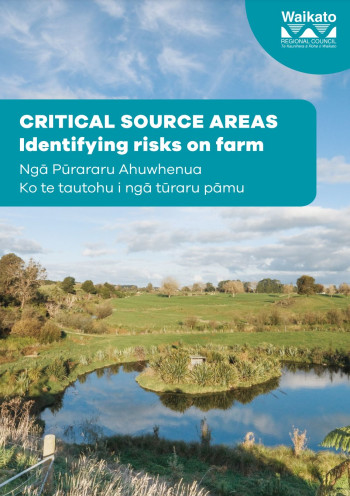Nutrient management
 A critical source area is anywhere on a farm that is at risk of losing contaminants.
A critical source area is anywhere on a farm that is at risk of losing contaminants.
They are often called “hotspots” for contaminant loss. The four main contaminants that affect water quality are bacteria, sediment, phosphorus and nitrogen.
There are a number of factors that create a critical source area; slope, soil, stock, moisture and land use. All of these increase pressure on to land, which increases the risk of losing contaminants.
Once you’ve identified the critical source areas, you can find the best mitigations for your farm. A Farm Environment Plan can help you identify these risks and prioritise actions to reduce the risk.
This guide should help you identify where you might find areas of risk around your farm and how you might mitigate these areas.
Nutrient management plans and worksheets
Rules and compliance
Visit the Waikato Regional Plan for the rules and regulations for nitrogen loading, fertiliser application, and the guidance notes for the use of fertiliser.
Farmer’s guide to environmental rules in the Waikato region
The purpose of this guide is to provide, in plain language as much as possible, up-to-date information about the rules for the activities that farmers commonly undertake, and whether these activities are permitted or need a resource consent.
It is important to remember that even activities that are permitted without consent will require certain conditions to be met. It also gives you a reference number for each rule so you can easily look up the full wording of the rules.


